Discover The Future of Everything
The Future of Everything

The Future of Everything
Author: Stanford Engineering
Subscribed: 977Played: 19,041Subscribe
Share
© All rights reserved
Description
Host Russ Altman, a professor of bioengineering, genetics, and medicine at Stanford, is your guide to the latest science and engineering breakthroughs. Join Russ and his guests as they explore cutting-edge advances that are shaping the future of everything from AI to health and renewable energy.
Along the way, “The Future of Everything” delves into ethical implications to give listeners a well-rounded understanding of how new technologies and discoveries will impact society. Whether you’re a researcher, a student, or simply curious about what’s on the horizon, tune in to stay up-to-date on the latest developments that are transforming our world.
Along the way, “The Future of Everything” delves into ethical implications to give listeners a well-rounded understanding of how new technologies and discoveries will impact society. Whether you’re a researcher, a student, or simply curious about what’s on the horizon, tune in to stay up-to-date on the latest developments that are transforming our world.
354 Episodes
Reverse
Molecular biologist Judith Frydman studies the nuances of protein folding and how defects in the process lead to neurodegenerative diseases. Her team studies protein folding in human cells and in model organisms, like yeast and worms, to understand the molecular events that precipitate harmful protein defects in humans. In one example, Frydman’s team explored how aging affects the creation and the quality of proteins in the brain, leading to cognitive problems. She is now looking to develop therapies – someday perhaps leading to cures – to debilitating diseases such as Alzheimer’s, Parkinson’s, Huntington’s, ALS, and others. The power of science gives her true hope in these important pursuits, Frydman tells host Russ Altman in this episode of Stanford Engineering’s The Future of Everything podcast.Have a question for Russ? Send it our way in writing or via voice memo, and it might be featured on an upcoming episode. Please introduce yourself, let us know where you're listening from, and share your question. You can send questions to thefutureofeverything@stanford.edu.Episode Reference Links:Stanford Profile: Judith FrydmanConnect With Us:Episode Transcripts >>> The Future of Everything WebsiteConnect with Russ >>> Threads / Bluesky / MastodonConnect with School of Engineering >>> Twitter/X / Instagram / LinkedIn / FacebookChapters:(00:00:00) IntroductionRuss Altman introduces guest Judith Frydman, a professor of biology and genetics at Stanford University.(00:04:00) Linking Protein Folding to AgingHow aging disrupts protein-folding machinery across many organisms.(00:07:16) Universal Aging PatternsThe similar age-related protein-folding defects found across organisms(00:09:27) Studying Killifish AgeingResearch on the African killifish as a rapid-aging model organism.(00:13:05) Ribosome Function DeclinesHow aging causes ribosomes to stall and collide, creating faulty proteins.(00:15:31) Aging Across SpeciesThe potential factors causing alternate aging rates in different species.(20:11) What Fails Inside Aging CellsThe cellular components that are leading to bad protein creation.(00:24:04) Therapeutic ApproachesPotential interventions to combat cellular and neurological degeneration.(00:25:12) Gene vs. Small-Molecule TreatmentsHow some interventions may be better suited for certain diseases.(00:27:47) Ribosome Drug PotentialWhy ribosomes and translation factors are viable drug targets.(00:28:56) Next Steps in Aging ResearchUsing human skin fibroblasts to study human aging mechanisms.(00:31:46) Future In a MinuteRapid-fire Q&A: scientific progress, young researchers, and archeology.(00:33:54) Conclusion
Connect With Us:Episode Transcripts >>> The Future of Everything WebsiteConnect with Russ >>> Threads / Bluesky / MastodonConnect with School of Engineering >>>Twitter/X / Instagram / LinkedIn / Facebook Hosted by Simplecast, an AdsWizz company. See pcm.adswizz.com for information about our collection and use of personal data for advertising.
Maria Barna is an authority on ribosomes – “life’s most ancient and spectacular molecular machines.” Ribosomes make proteins in the body. There can be a thousand different types of ribosomes in a single cell, she says, each with a specific job to do. But sometimes things go awry and ribosomes get “hijacked,” leading to disease. Barna studies these “diabolical” variations to find new therapies to treat diseases ranging from cancer and COVID to Parkinson’s. When diseases hit, it’s all about the ribosomes, Barna tells host Russ Altman on this episode of Stanford Engineering’s The Future of Everything podcast.Have a question for Russ? Send it our way in writing or via voice memo, and it might be featured on an upcoming episode. Please introduce yourself, let us know where you're listening from, and share your question. You can send questions to thefutureofeverything@stanford.edu.Episode Reference Links:Stanford Profile: Maria BarnaConnect With Us:Episode Transcripts >>> The Future of Everything WebsiteConnect with Russ >>> Threads / Bluesky / MastodonConnect with School of Engineering >>> Twitter/X / Instagram / LinkedIn / FacebookChapters:(00:00:00) IntroductionRuss Altman introduces guest Maria Barna, a professor of genetics at Stanford University.(00:04:21) Origins of Ribosome ResearchMaria explains why ribosomes became the focus of her work.(00:06:14) Ribosome Function and ScaleRibosomes’ functions and the energy required for their production.(00:08:28) Ribosomes as MachinesHow ribosomes influence which proteins are produced and when.(00:09:48) Ribosome RegulationThe regulatory layers within ribosomes and their possible variants.(00:14:35) Ribosomes and DiseaseHow ribosomal dysfunction is linked to a wide range of diseases.(00:18:16) Ribosome Mutations and DevelopmentCongenital disorders that can be attributed to specific ribosomal mutations.(00:20:44) RNA vs. Protein OutputWhy RNA measurements alone do not accurately predict protein levels.(00:24:16) Designing Ribosomes for TherapyThe potential of using engineered ribosomes for target therapies.(00:26:16) Small-Molecule Ribosome ModulatorsScreening compounds that may enhance ribosome activity for treatments.(00:28:39) Future Ribosome ProfilingIsolating individual ribosomes to understand their specific roles.(00:30:35) Future In a MinuteRapid-fire Q&A: scientific progress, community, and alternative career interest.(00:34:01) Conclusion
Connect With Us:Episode Transcripts >>> The Future of Everything WebsiteConnect with Russ >>> Threads / Bluesky / MastodonConnect with School of Engineering >>>Twitter/X / Instagram / LinkedIn / Facebook Hosted by Simplecast, an AdsWizz company. See pcm.adswizz.com for information about our collection and use of personal data for advertising.
In October, chemical engineer Will Tarpeh was awarded a 2025 MacArthur “Genius Grant” in recognition of his pioneering work to turn wastewater into a source of valuable materials. Will envisions a future in which the concept of wastewater is obsolete, thanks to advances in recycling. A couple of years ago, we sat down to talk with him about this work, and we hope you’ll take another listen today to learn more about the research Will is doing to transform the potential of wastewater into resources.Have a question for Russ? Send it our way in writing or via voice memo, and it might be featured on an upcoming episode. Please introduce yourself, let us know where you're listening from, and share your question. You can send questions to thefutureofeverything@stanford.edu.Episode Reference Links:Stanford Profile: William Abraham TarpehConnect With Us:Episode Transcripts >>> The Future of Everything WebsiteConnect with Russ >>> Threads / Bluesky / MastodonConnect with School of Engineering >>> Twitter/X / Instagram / LinkedIn / FacebookChapters:(00:00:00) IntroductionRuss Altman introduces Will Tarpeh, a professor of chemical engineering at Stanford University.(00:03:01) Wastewater as a Modern MineHow elements like nitrogen and phosphorus can be recovered from waste.(00:04:15) Path to Sanitation ResearchWill shares what led to his interest in studying wastewater.(00:06:55) The Science of SeparationThe electrochemical and material techniques to extract valuable compounds.(00:08:37) Urine-Based FertilizerHow human urine could meet up to 30% of global fertilizer needs.(00:11:08) Drugs in WastewaterThe potential of reclaiming pharmaceuticals from waste streams.(00:14:14) Decentralized SanitationOpportunities for neighborhood or household-scale treatment systems.(00:16:48) Source Separation SystemsHow dividing waste at the source improves recycling and recovery.(00:18:56) Global Sanitation ChallengesWays that developing countries can adopt modern waste solutions.(00:23:51) Preventing Algal BloomsThe systems that are helping to reduce nutrient pollution and dead zones.(00:27:16) The Urine SummitA community advancing urine recycling and sustainable sanitation policy.(00:28:43) Conclusion
Connect With Us:Episode Transcripts >>> The Future of Everything WebsiteConnect with Russ >>> Threads / Bluesky / MastodonConnect with School of Engineering >>>Twitter/X / Instagram / LinkedIn / Facebook Hosted by Simplecast, an AdsWizz company. See pcm.adswizz.com for information about our collection and use of personal data for advertising.
Gabriel Weintraub studies how digital markets evolve. In that regard, he says platforms like Amazon, Uber, and Airbnb have already disrupted multiple verticals through their use of data and digital technologies. Now, they face both the opportunity and the challenge of leveraging AI to further transform markets, while doing so in a responsible and accountable way. Weintraub is also applying these insights to ease friction and accelerate results in government procurement and regulation. Ultimately, we must fall in love with solving the problem, not with the technology itself, Weintraub tells host Russ Altman on this episode of Stanford Engineering’s The Future of Everything podcast.Have a question for Russ? Send it our way in writing or via voice memo, and it might be featured on an upcoming episode. Please introduce yourself, let us know where you're listening from, and share your question. You can send questions to thefutureofeverything@stanford.edu.Episode Reference Links:Stanford Profile: Gabriel WeintraubConnect With Us:Episode Transcripts >>> The Future of Everything WebsiteConnect with Russ >>> Threads / Bluesky / MastodonConnect with School of Engineering >>> Twitter/X / Instagram / LinkedIn / FacebookChapters:(00:00:00) IntroductionRuss Altman introduces guest Gabriel Weintraub, a professor of operations, information, and technology at Stanford University.(00:03:00) School Lunches to Digital PlatformsHow designing markets in Chile led Gabriel to study digital marketplaces.(00:03:57) What Makes a Good MarketOutlining the core principles that constitute a well-functioning market.(00:05:29) Opportunities and Challenges OnlineThe challenges associated with the vast data visibility of digital markets.(00:06:56) AI and the Future of SearchHow AI and LLMs could revolutionize digital platforms.(00:08:15) Rise of Vertical MarketplacesThe new specialized markets that curate supply and ensure quality.(00:10:23) Winners and Losers in Market ShiftsHow technology is reshaping industries from real estate to travel.(00:12:38) Government Procurement in ChileApplying market design and AI tools to Chile’s procurement system.(00:15:00) Leadership and AdoptionThe role of leadership in modernizing government systems.(00:18:59) AI in Government and RegulationUsing AI to help governments streamline complex bureaucratic systems.(00:21:45) Streamlining Construction PermitsPiloting AI tools to speed up municipal construction-permit approvals.(00:23:20) Building an AI StrategyCreating an AI strategy that aligns with business or policy goals.(00:25:26) Workforce and ExperimentationTraining employees to experiment with LLMs and explore productivity gains.(00:27:36) Humans and AI CollaborationThe importance of designing AI systems to augment human work, not replace it.(00:28:26) Future in a MinuteRapid-fire Q&A: AI’s impact, passion and resilience, and soccer dreams.(00:30:39) Conclusion
Connect With Us:Episode Transcripts >>> The Future of Everything WebsiteConnect with Russ >>> Threads / Bluesky / MastodonConnect with School of Engineering >>>Twitter/X / Instagram / LinkedIn / Facebook Hosted by Simplecast, an AdsWizz company. See pcm.adswizz.com for information about our collection and use of personal data for advertising.
Biochemist Lingyin Li survived breast cancer at just 30 and now works to harness the human immune system to fight cancers that have long evaded treatment. T cells, she says, are powerful cancer killers, but they can be oblivious. She and her lab colleagues have discovered a masking enzyme that squelches the immune system’s “danger signals” and are now developing drugs to block that enzyme. She likens her work to an arms race between cancer and immunotherapy. “The cancers are not getting smarter, but we are,” Li tells host Russ Altman on this episode of Stanford Engineering’s The Future of Everything podcast.Have a question for Russ? Send it our way in writing or via voice memo, and it might be featured on an upcoming episode. Please introduce yourself, let us know where you're listening from, and share your question. You can send questions to thefutureofeverything@stanford.edu.Episode Reference Links:Stanford Profile: Lingyin LiConnect With Us:Episode Transcripts >>> The Future of Everything WebsiteConnect with Russ >>> Threads / Bluesky / MastodonConnect with School of Engineering >>> Twitter/X / Instagram / LinkedIn / FacebookChapters:(00:00:00) IntroductionRuss Altman introduces guest Lingyin Li, a professor of biochemistry at Stanford University.(00:03:38) Research MotivationLingyin explains how her breast cancer diagnosis inspired her research.(00:04:31) How T-Cells WorkT-cell mechanisms and why they struggle to reach solid tumors.(00:05:38) Immune System OverviewInnate and adaptive immunity and how mutations make cancer recognizable.(00:07:28) Awakening the Immune SystemEfforts to stimulate innate immune cells to detect and expose tumors.(00:10:54) The Cancer SignalDiscovery of cancer-derived DNA signals that alert the immune system.(00:13:01) Cancer’s Evasion MechanismHow tumors destroy immune signals to hide from detection.(00:14:26) ENPP1 EnzymeIdentification of ENPP1 as the enzyme enabling immune evasion.(00:15:22) Balancing Immunity and SafetyRole of ENPP1 in autoimmunity and the challenge of targeting it safely.(00:19:30) ENPP1 InhibitorsDevelopment of molecules to block ENPP1 and enhance immune signaling.(00:24:55) Preclinical FindingsThe promising results against aggressive solid tumors in animal studies(00:28:05) From Lab to ClinicThe progress toward FDA approval and preparation for human testing.(00:31:04) Future In a MinuteRapid-fire Q&A: innovation, collaboration, and the outlook for cancer treatment.(00:33:14) Conclusion
Connect With Us:Episode Transcripts >>> The Future of Everything WebsiteConnect with Russ >>> Threads / Bluesky / MastodonConnect with School of Engineering >>>Twitter/X / Instagram / LinkedIn / Facebook Hosted by Simplecast, an AdsWizz company. See pcm.adswizz.com for information about our collection and use of personal data for advertising.
On our 300th episode, Stanford Hoover Institution Director and former U.S. Secretary of State Condoleezza Rice talks about her return to Stanford after years in government and the impact she sees rapidly advancing technologies having on democracy and public policy. She says the future demands greater collaboration among industry, academia, and government to ensure promising fields like quantum computing and AI are used for the greatest good—in education, medicine, and the sciences. We are in a race that we must win, Rice tells host Russ Altman on this special episode of Stanford Engineering’s The Future of Everything podcast.Have a question for Russ? Send it our way in writing or via voice memo, and it might be featured on an upcoming episode. Please introduce yourself, let us know where you're listening from, and share your question. You can send questions to thefutureofeverything@stanford.edu.Episode Reference Links:Stanford Profile: Condoleezza RiceConnect With Us:Episode Transcripts >>> The Future of Everything WebsiteConnect with Russ >>> Threads / Bluesky / MastodonConnect with School of Engineering >>> Twitter/X / Instagram / LinkedIn / FacebookChapters:(00:00:00) IntroductionRuss Altman introduces guest Condoleezza Rice, former U.S. Secretary of State and a professor of political science and political economy at Stanford University.(00:04:08) Returning to StanfordWhy Condoleezza returned to academia after serving as Secretary of State.(00:04:50) Higher Education & Public TrustPotential factors impacting universities' connection to the broader public.(00:07:31) Why Research Still MattersThe importance of curiosity-driven, federally funded university research.(00:09:32) Hoover’s Emerging Tech InitiativeAn outline of the Hoover Institution’s Tech Initiative and its policies.(00:12:11) Uniting Scientists & PolicymakersHow engineers and researchers are engaging with policy and ethics.(00:13:41) The Race For InnovationEmerging themes and key enablers in the technology innovation race.(00:19:17) Industry in the LeadHow private companies are now the primary drivers of innovation.(00:22:02) Global Tech & National InterestsThe tension between globalized tech firms and U.S. policy interests(00:24:35) AI & EducationUsing AI as a tool to enhance teaching and critical thinking in students.(00:28:30) Students Driving PolicyThe contribution students are making to Hoover’s tech policy work.(00:29:23) Future In a MinuteRapid-fire Q&A: hope, innovation, time, humanity, and alternate careers.(00:31:09) Conclusion
Connect With Us:Episode Transcripts >>> The Future of Everything WebsiteConnect with Russ >>> Threads / Bluesky / MastodonConnect with School of Engineering >>>Twitter/X / Instagram / LinkedIn / Facebook Hosted by Simplecast, an AdsWizz company. See pcm.adswizz.com for information about our collection and use of personal data for advertising.
Tune in on Friday, November 7th to listen to our 300th episode with a very special guest.
Connect With Us:Episode Transcripts >>> The Future of Everything WebsiteConnect with Russ >>> Threads / Bluesky / MastodonConnect with School of Engineering >>>Twitter/X / Instagram / LinkedIn / Facebook Hosted by Simplecast, an AdsWizz company. See pcm.adswizz.com for information about our collection and use of personal data for advertising.
About a year ago, a research team at Stanford Engineering led by Guosong Hong published a paper about their work to use a common food dye to make mouse skin transparent. Their findings made a big splash and have the potential to provide a range of benefits in health care. You can imagine that if we have the ability to see what’s going on under the skin without having to cut into it, or use radiation to get a clear look, this could improve everything from invasive biopsies to painful blood draws. We hope you’ll tune in again and enjoy.Have a question for Russ? Send it our way in writing or via voice memo, and it might be featured on an upcoming episode. Please introduce yourself, let us know where you're listening from, and share your question. You can send questions to thefutureofeverything@stanford.edu.Episode Reference Links:Stanford Profile: Guosong HongGuosong's Lab: THE HONG LABConnect With Us:Episode Transcripts >>> The Future of Everything WebsiteConnect with Russ >>> Threads / Bluesky / MastodonConnect with School of Engineering >>> Twitter/X / Instagram / LinkedIn / FacebookChapters:(00:00:00) IntroductionRuss Altman introduces Guosong Hong, an expert in physics, material science, and biology from Stanford University.(00:01:52) Material Science Meets NeuroscienceHow Guosong’s research blends nanomaterials and brain science.(00:03:00) Why Tissue Isn’t TransparentThe challenge of light penetration in biological tissues.(00:04:54) A New Approach to Tissue ClearingThe physics behind tissue transparency and refractive index manipulation.(00:07:57) UV Light and TransparencyHow manipulating UV absorption can align refractive indexes.(00:10:16) First Experiments and ResultsInitial tests that demonstrate successful tissue clearing.(00:12:19) Applications in MedicineThe potential of transparent tissues in dermatology and medical imaging.(00:14:36) Testing on Live TissueThe results of testing transparency techniques on live mice.(00:18:30) Transparency in NatureHow some species have naturally transparent tissue.(00:19:52) Human Eye and Protein TransparencyThe unique proteins that keep our lenses clear using similar physics.(00:22:24) Wireless Light Inside the BodyDeveloping ultrasound-activated light sources for tissue imaging.(00:24:55) Precision of Ultrasound LightHow precisely ultrasound can trigger tiny particles to emit light.(00:28:14) Conclusion
Connect With Us:Episode Transcripts >>> The Future of Everything WebsiteConnect with Russ >>> Threads / Bluesky / MastodonConnect with School of Engineering >>>Twitter/X / Instagram / LinkedIn / Facebook Hosted by Simplecast, an AdsWizz company. See pcm.adswizz.com for information about our collection and use of personal data for advertising.
Clinician-scientist Jill Helms is an expert on healing. Until about age 30, people heal easily, she says, but later on, not so well. Regenerative medicine suggests avenues for improvement, she promises. Her research focuses on understanding the physical and molecular processes of healing to design better therapies. One approach awakens “sleeper” stem cells to aid healing, a new drug in trial regenerates bone, and another avenue targets infections that appear near medical devices using gum-like tissues that create sealing barriers. In many ways, nature remains our best model for healing, Helms tells host Russ Altman on this episode of Stanford Engineering’s The Future of Everything podcast.Have a question for Russ? Send it our way in writing or via voice memo, and it might be featured on an upcoming episode. Please introduce yourself, let us know where you're listening from, and share your question. You can send questions to thefutureofeverything@stanford.edu.Episode Reference Links:Stanford Profile: Jill HelmsConnect With Us:Episode Transcripts >>> The Future of Everything WebsiteConnect with Russ >>> Threads / Bluesky / MastodonConnect with School of Engineering >>> Twitter/X / Instagram / LinkedIn / FacebookChapters:(00:00:00) IntroductionRuss Altman introduces guest Jill Helms, a professor of surgery at Stanford University.(00:03:42) Why Study Wound HealingJill shares what led her to explore how the body repairs itself after injury.(00:04:23) How Healing WorksExplanation of physical signals, stem cells, and the stages of tissue repair.(00:07:23) Healing Declines with AgeHow healing quality and speed drop significantly after age thirty.(00:10:48) Physical vs. Biological SignalsThe biological and physical signals that work together to guide healing.(00:13:21) Regenerative MedicineTherapies designed to restore healing capacity and accelerate repair.(00:16:55) Infection and ImplantsChallenges of preventing infections around skin penetrating medical devices.(00:21:54) Nature’s BlueprintUsing biological models to inspire self-renewing wound interfaces.(00:26:19) Biomimicry and Evolutionary InsightWhat scientists are learning from animals to inform human tissue repair.(00:30:51) Future In a MinuteRapid-fire Q&A: scientific curiosity, young researchers, and supportive environments.(00:33:04) Conclusion
Connect With Us:Episode Transcripts >>> The Future of Everything WebsiteConnect with Russ >>> Threads / Bluesky / MastodonConnect with School of Engineering >>>Twitter/X / Instagram / LinkedIn / Facebook Hosted by Simplecast, an AdsWizz company. See pcm.adswizz.com for information about our collection and use of personal data for advertising.
Bioengineer Michael Fischbach studies alternative vaccine delivery methods, like self-administered creams with no needles, health professionals, or side effects. He teases a day when vaccines that don’t make you feel bad come in the mail in ketchup-style packets. Such innovations would greatly improve vaccine uptake, especially in developing countries, and speed global response to novel viruses. It would change how we think about vaccines, Fischbach tells host Russ Altman on this episode of Stanford Engineering’s The Future of Everything podcast.Have a question for Russ? Send it our way in writing or via voice memo, and it might be featured on an upcoming episode. Please introduce yourself, let us know where you're listening from, and share your question. You can send questions to thefutureofeverything@stanford.edu.Episode Reference Links:Stanford Profile: Michael FischbachConnect With Us:Episode Transcripts >>> The Future of Everything WebsiteConnect with Russ >>> Threads / Bluesky / MastodonConnect with School of Engineering >>> Twitter/X / Instagram / LinkedIn / FacebookChapters:(00:00:00) IntroductionRuss Altman introduces guest Michael Fischbach, a professor of bioengineering at Stanford University.(00:04:24) Cream-Based VaccinesThe discovery that revealed the skin’s ability to spark systemic immunity.(00:07:36) Engineering ImmunityModifying staph epidermidis to carry antigens and test immune response.(00:09:38) Tumor RegressionHow engineered bacteria triggered tumor-killing immunity in mice.(00:12:53) Antibody DiscoveryEvidence that skin exposure can generate long-lasting antibodies.(00:17:02) Antibody Response in HumansWhether humans show antibody responses to their own skin bacteria.(00:18:42) Turning Bacteria into VaccinesEmbedding harmless pathogen fragments into bacterial surface proteins.(00:20:55) Immunity Without ShotsHow mice achieved vaccine-level immunity through topical application.(00:24:00) Reimagining Vaccine DeliveryThe potential for self-applied, needle-free, and multiplexed vaccines.(00:26:50) Mechanism Behind Skin ImmunityHow skin immune cells may constantly sample microbes for defence.(00:28:14) Next Steps in DevelopmentThe path toward testing safety, dosage, and delivery in higher models.(00:29:57) Choosing Vaccine TargetsViruses and diseases that could be targets for early skin-based vaccines.(00:31:11) Safety and ReversibilityEnsuring safety with reversible bacteria and limited trial participants.(00:33:04) Transitioning to BiotechTransitioning research from Stanford to large-scale biotech development.(00:34:31) Future In a MinuteRapidfire Q&A: creative science, vaccine innovation, and biology’s future.(00:36:56) Conclusion
Connect With Us:Episode Transcripts >>> The Future of Everything WebsiteConnect with Russ >>> Threads / Bluesky / MastodonConnect with School of Engineering >>>Twitter/X / Instagram / LinkedIn / Facebook Hosted by Simplecast, an AdsWizz company. See pcm.adswizz.com for information about our collection and use of personal data for advertising.
As fall arrives, many regions experience dramatic weather shifts—think early frosts, storms, or unusual temperature swings. Last year, we sat down with Noah Diffenbaugh, an expert on climate change. We discussed the fact that extreme weather is becoming more frequent. Noah pointed out that there are still things we can do to mitigate the impacts of severe weather. We hope you’ll take another listen to this episode to learn about the solutions that are within reach. Have a question for Russ? Send it our way in writing or via voice memo, and it might be featured on an upcoming episode. Please introduce yourself, let us know where you're listening from, and share your question. You can send questions to thefutureofeverything@stanford.edu.Episode Reference Links:Stanford Profile: Noah DiffenbaughConnect With Us:Episode Transcripts >>> The Future of Everything WebsiteConnect with Russ >>> Threads / Bluesky / MastodonConnect with School of Engineering >>> Twitter/X / Instagram / LinkedIn / FacebookChapters:(00:00:00) IntroductionRuss Altman introduces guest Noah Diffenbaugh, a professor of Earth System Science at Stanford University.(00:02:07) Global Impact of Climate ChangeThe areas where climate change is having the greatest impact globally.(00:03:00) Climate Phenomena and HumansConnecting climate science with localized human impacts.(00:05:49) Understanding Climate ForcingThe concept of "climate forcing" and its significance in Noah’s research.(00:09:34) Geoengineering & Pinatubo CoolingThe risks associated with reflecting sunlight to cool the planet.(00:13:23) Climate InterventionsWhy manipulating the climate could have unforeseen outcomes.(00:20:51) Adaptation to Climate ChangeHumanity’s response to climate change as impacts accelerate.(00:24:53) Increase in Extreme EventsWhy extreme climate events are more frequent and severe.(00:28:08) AI in Climate ResearchHow AI enables testable, data-driven climate predictions.(00:32:02) Conclusion
Connect With Us:Episode Transcripts >>> The Future of Everything WebsiteConnect with Russ >>> Threads / Bluesky / MastodonConnect with School of Engineering >>>Twitter/X / Instagram / LinkedIn / Facebook Hosted by Simplecast, an AdsWizz company. See pcm.adswizz.com for information about our collection and use of personal data for advertising.
Rishee Jain is an engineer and an expert in the built environment – the manmade structures of modern life. The future, Jain says, will be a place where everyone has a safe, comfortable place to live and work, and the built environment adapts in real time to our needs. Jain is now exploring cool roofs that reflect heat to lower indoor temperatures and improve occupants’ well-being. We once believed that humans bent infrastructure to our needs, but now we understand how infrastructure changes us, too, Jain tells host Russ Altman on this episode of Stanford Engineering’sThe Future of Everything podcast.Have a question for Russ? Send it our way in writing or via voice memo, and it might be featured on an upcoming episode. Please introduce yourself, let us know where you're listening from, and share your question. You can send questions to thefutureofeverything@stanford.edu.Episode Reference Links:Stanford Profile: Rishee JainConnect With Us:Episode Transcripts >>> The Future of Everything WebsiteConnect with Russ >>> Threads / Bluesky / MastodonConnect with School of Engineering >>> Twitter/X / Instagram / LinkedIn / FacebookChapters:(00:00:00) IntroductionRuss Altman introduces guest Rishee Jain, a professor of civil and environmental engineering at Stanford University.(00:03:50) Focus on Built Urban EnvironmentsRishee Jain shares how early hands-on projects inspired his career.(00:04:51) The Social DimensionWhy infrastructure must account for human behavior and social needs.(00:07:03) How Infrastructure Shapes UsExamples of sidewalks, bike lanes, and design choices influencing wellbeing.(00:09:11) Defining Urban FormDefining urban form as design across buildings, neighborhoods, and cities.(00:10:58) Decision-Makers at Every LevelHow policymakers, communities, and building owners shape design.(00:13:38) Dynamic InfrastructureThe shift from static infrastructure to adaptable, responsive systems.(00:15:19) Levers of ChangeUsing thermal and lighting design as key factors for wellbeing.(00:19:36) Climate & Extreme HeatThe impact of extreme heat on building design and vulnerable communities.(00:23:25) Measuring ImpactStudies using wearables to track the benefits of infrastructure interventions.(00:24:25) Community FeedbackThe optimistic research results on infrastructure interventions.(00:26:18) Retrofitting Old BuildingsChallenges in adapting existing infrastructure with minimal disruption.(00:31:12) Future in a MinuteRapid-fire Q&A: hope, infrastructure, research needs, and lessons from history.(00:33:01) Conclusion
Connect With Us:Episode Transcripts >>> The Future of Everything WebsiteConnect with Russ >>> Threads / Bluesky / MastodonConnect with School of Engineering >>>Twitter/X / Instagram / LinkedIn / Facebook Hosted by Simplecast, an AdsWizz company. See pcm.adswizz.com for information about our collection and use of personal data for advertising.
In a special Future of Everything podcast episode recorded live before a studio audience in New York, host Russ Altman talks to three authorities on the innovation economy. His guests – Fei-Fei Li, professor of computer science and co-director of the Stanford Institute for Human-Centered AI (HAI); Susan Athey, professor and authority on the economics of technology; and Neale Mahoney, Trione Director of the Stanford Institute for Economic Policy Research – bring their distinct-but-complementary perspectives to a discussion on how artificial intelligence is reshaping our economy.Athey emphasizes that both AI broadly and AI-based coding tools specifically are general-purpose technologies, like electricity or the personal computer, whose impact may be felt quickly in certain sectors but much more slowly in aggregate. She tells how solving one bottleneck to implementation often reveals others – whether in digitization, adoption costs, or the need to restructure work and organizations. Mahoney draws on economic history to say we are in a “veil of ignorance” moment with regard to societal impacts. We cannot know whose jobs will be disrupted, he says, but we can invest in safety nets now to ease the transition. Li cautions against assuming AI will replace people. Instead, she speaks of AI as a “horizontal technology” that could supercharge human creativity – but only if it is properly rooted in science, not science fiction.Collectively, the panel calls on policymakers, educators, researchers, and entrepreneurs to steer AI toward what they call “human-centered goals” – protecting workers, growing opportunities, and supercharging education and medicine – to deliver broad and shared prosperity. It’s the future of the innovation economy on this episode of Stanford Engineering’s The Future of Everything podcast.Have a question for Russ? Send it our way in writing or via voice memo, and it might be featured on an upcoming episode. Please introduce yourself, let us know where you're listening from, and share your question. You can send questions to thefutureofeverything@stanford.edu.Episode Reference Links:Stanford Profile: Fei-Fei LiStanford Profile: Susan AtheyStanford Profile: Neale MahoneyConnect With Us:Episode Transcripts >>> The Future of Everything WebsiteConnect with Russ >>> Threads / Bluesky / MastodonConnect with School of Engineering >>> Twitter/X / Instagram / LinkedIn / FacebookChapters:(00:00:00) IntroductionRuss Altman introduces live guests Fei-Fei Li, Susan Athey, and Neale Mahoney, professors from Stanford University.(00:02:37) Lessons from Past TechnologyComparing AI with past technologies and the bottlenecks to their adoption.(00:06:29) Jobs & Safety NetsThe uncertainty of AI’s labor impact and investing in social protections.(00:08:29) Augmentation vs. ReplacementUsing AI as a tool to enhance, not replace, human work and creativity.(00:11:41) Human-Centered AI & PolicyShaping AI through universities, government, and global collaboration.(00:15:58) Education RevolutionThe potential for AI to revolutionize education by focusing on human capital.(00:18:58) Balancing Regulation & InnovationBalancing pragmatic, evidence-based AI policy with entrepreneurship.(00:22:22) Competition & Market PowerThe risks of monopolies and the role of open models in fair pricing.(00:25:22) America’s Economic FunkHow social media and innovation are shaping America’s declining optimism.(00:27:05) Future in a MinuteThe panel shares what gives them hope and what they’d study today.(00:30:49) Conclusion
Connect With Us:Episode Transcripts >>> The Future of Everything WebsiteConnect with Russ >>> Threads / Bluesky / MastodonConnect with School of Engineering >>>Twitter/X / Instagram / LinkedIn / Facebook Hosted by Simplecast, an AdsWizz company. See pcm.adswizz.com for information about our collection and use of personal data for advertising.
About a year ago we released an episode on the future of ultrafast electronics and it quickly became one of our most popular episodes on YouTube. We’re excited to re-share it with you today. Physicist Matthias Kling walks us through his study of photons and the things science can do with ultrafast pulses of x-rays. The knowledge he’s gaining could reshape fields like materials science, artificial intelligence, ultrafast and quantum computers, and medical diagnostics. We hope you’ll tune in again wherever you get your podcasts. And as a reminder, we post full video versions of each of our episodes on YouTube every Friday, so be sure to check those out if you haven’t already.Have a question for Russ? Send it our way in writing or via voice memo, and it might be featured on an upcoming episode. Please introduce yourself, let us know where you're listening from, and share your question. You can send questions to thefutureofeverything@stanford.edu.Episode Reference Links:Stanford Profile: Matthias KlingConnect With Us:Episode Transcripts >>> The Future of Everything WebsiteConnect with Russ >>> Threads / Bluesky / MastodonConnect with School of Engineering >>> Twitter/X / Instagram / LinkedIn / FacebookChapters:(00:00:00) IntroductionRuss Altman introduces guest Matthias Kling, a professor of photon science and applied physics at Stanford University.(00:02:21) Ultrafast ElectronicsNew technologies enabling ultrafast photonics and electronics.(00:05:40) Attosecond Science ApplicationsCapturing electron and molecular movements with attosecond pulses.(00:10:23) Real-Time Molecular MeasurementsHow free-electron lasers enable detailed, atom-specific measurements.(00:15:02) Free-Electron LasersUsing light waves to capture images of molecules at room temperature.(00:22:28) Electronics at Light SpeedWhether attosecond science could enable computing at petahertz speed.(00:26:24) Lightwaves & Quantum ComputingHow lightwave electronics could allow for energy-efficient quantum computers.(00:29:29) AI Meets Ultrafast ScienceAI's role in optimizing research and data collection in ultrafast electronics.(00:31:47) The Future of Ultafast ElectronicsHow attosecond science, computing, and AI converge to accelerate innovation.(00:35:25) Conclusion
Connect With Us:Episode Transcripts >>> The Future of Everything WebsiteConnect with Russ >>> Threads / Bluesky / MastodonConnect with School of Engineering >>>Twitter/X / Instagram / LinkedIn / Facebook Hosted by Simplecast, an AdsWizz company. See pcm.adswizz.com for information about our collection and use of personal data for advertising.
Allergist Tina Sindher acknowledges that allergies may be affecting more people worldwide, influenced by a combination of factors such as environmental changes, modern lifestyles, urbanization, and evolving dietary habits. Prevention is playing catch-up, and promising new strategies include earlier food introduction than was popular only a few years ago. On the treatment front, hopes are rising for immunotherapies and a new prescription medicine, omalizumab, that addresses multiple allergens at once. While no single approach helps all, these strategies could allow millions worldwide to better manage their allergies, Sindher tells host Russ Altman on this episode of Stanford Engineering’s The Future of Everything podcast. Have a question for Russ? Send it our way in writing or via voice memo, and it might be featured on an upcoming episode. Please introduce yourself, let us know where you're listening from, and share your question. You can send questions to thefutureofeverything@stanford.edu.Episode Reference Links:Stanford Profile: Sayantani (Tina) SindherConnect With Us:Episode Transcripts >>> The Future of Everything WebsiteConnect with Russ >>> Threads / Bluesky / MastodonConnect with School of Engineering >>> Twitter/X / Instagram / LinkedIn / FacebookChapters:(00:00:00) IntroductionRuss Altman introduces guest Tina Sindher, a professor of medicine and allergy at Stanford University.(00:03:16) Inside the Immune ResponseWhy our immune systems trigger allergic reactions.(00:04:57) Genes vs. EnvironmentWhether genetics or environment drive allergy risks.(00:08:05) The Microbiome FactorThe role of the microbiome and early exposures in prevention.(00:09:17) A Global Allergy SurgeHow global allergy trends reveal rising health challenges.(00:11:56) Potent Food TriggersWhy some foods cause stronger and faster reactions.(00:13:49) Emerging RisksWhether Alpha-Gal signals new emerging allergy risks.(00:15:47) Multi-Food AllergiesHow multi-food allergies complicate diagnosis and treatment.(00:19:02) Preventing Allergies EarlyWhy early food introduction may help prevent allergies.(00:20:54) Skin’s Role in AllergiesThe importance of infant skin health in allergy development.(00:23:39) Testing LimitationsThe limits of current testing methods to truly diagnose allergies.(00:25:13) Standard Testing ProcedureThe current methodologies deployed when testing for allergies.(00:27:28) New TherapiesHow new therapies like OIT and Xolair are reshaping treatment.(00:31:50) The Future of AllergiesThe potential of combined therapies to aid in allergy treatment.(00:34:33) Managing Seasonal AllergiesHow to manage seasonal allergies effectively at home.(00:37:08) Conclusion
Connect With Us:Episode Transcripts >>> The Future of Everything WebsiteConnect with Russ >>> Threads / Bluesky / MastodonConnect with School of Engineering >>>Twitter/X / Instagram / LinkedIn / Facebook Hosted by Simplecast, an AdsWizz company. See pcm.adswizz.com for information about our collection and use of personal data for advertising.
Endocrinologist Joy Wu says that osteoporosis can affect more than half of women and a quarter of men over 50 – often without symptoms until a fracture changes everything, leading to a loss of mobility and independence. Wu explains why bones weaken with age and how to strengthen them through exercise and smart medicine. Her lab is exploring innovative drugs and turning skin cells into new bone-forming osteoblasts. We’re delving into the great mystery of building new bone and making old bones stronger, Wu tells host Russ Altman on this episode of Stanford Engineering’s The Future of Everything podcast.Have a question for Russ? Send it our way in writing or via voice memo, and it might be featured on an upcoming episode. Please introduce yourself, let us know where you're listening from, and share your question. You can send questions to thefutureofeverything@stanford.edu.Episode Reference Links:Stanford Profile: Joy WuConnect With Us:Episode Transcripts >>> The Future of Everything WebsiteConnect with Russ >>> Threads / Bluesky / MastodonConnect with School of Engineering >>> Twitter/X / Instagram / LinkedIn / FacebookChapters:(00:00:00) IntroductionRuss Altman introduces guest Joy Wu, a professor of endocrinology at Stanford University.(00:03:06) Path into Bone ResearchJoy shares her path from endocrinology training to studying bone biology.(00:04:10) Calcium and Vitamin D in Bone HealthHow these nutrients build strong bones and prevent fractures.(00:05:13) Why Bones Heal ThemselvesWhy bones can regenerate so effectively compared to other tissues.(00:06:26) Can We Feel Our Bones?The mystery of weather-related aches at old fracture sites.(00:07:23) Understanding OsteoporosisThe prevalence of osteoporosis in the elderly, especially in women.(00:08:34) Diagnosing OsteoporosisWhy osteoporosis often goes undetected until fractures appear.(00:09:36) Risk Factors Beyond AgingThe risk factors outside of aging that can lead to osteoporosis.(00:10:48) Steroids, Exercise, and Bone HealthThe impact of systemic steroids and exercise on bone health.(00:12:40) Height Loss and Spine FracturesHow shrinking height in older adults can signal vertebral fractures.(00:14:46) Cancer and Bone HealthHow cancers spread to bone and how therapies affect bone health.(00:17:09) Medications for OsteoporosisThe complexities of using certain medications in cancer patients with bone loss.(00:20:10) Hormones and Bone GrowthUsing SERMs to protect bone while reducing breast cancer risk.(00:21:45) Stem Cells and Building BoneResearch on reprogramming skin cells into bone-forming osteoblasts.(00:23:31) Why Treatments PlateauWhy bone-building drugs stop working after two years.(00:24:49) Challenges in Bone RegenerationThe potential of Wnt signalling and stem cells in lasting bone regeneration.(00:28:09) Validating Osteoblasts in the LabTesting whether reprogrammed cells behave like natural osteoblasts.(00:29:11) Future Outlook for Bone BiologyThe limits of bone cell replication and what it means for future therapies.(00:30:10) Advice for Strong BonesPractical do’s and don’ts for optimizing bone health.(00:32:41) Conclusion
Connect With Us:Episode Transcripts >>> The Future of Everything WebsiteConnect with Russ >>> Threads / Bluesky / MastodonConnect with School of Engineering >>>Twitter/X / Instagram / LinkedIn / Facebook Hosted by Simplecast, an AdsWizz company. See pcm.adswizz.com for information about our collection and use of personal data for advertising.
It’s still summer, but many children and teachers are back in school or preparing to return to the classroom. About a year ago, we sat down with Rebecca Silverman, a professor of education, to discuss the complex process of learning how to read. Professor Silverman unpacks the challenges of decoding and comprehension, two things that are vital for reading instruction to be successful. Whether you’re supporting a new reader or curious about the hurdles new readers must overcome, we hope you’ll tune in to this conversation again.Have a question for Russ? Send it our way in writing or via voice memo, and it might be featured on an upcoming episode. Please introduce yourself, let us know where you're listening from, and share your question. You can send questions to thefutureofeverything@stanford.edu.Episode Reference Links:Stanford Profile: Rebecca D. SilvermanConnect With Us:Episode Transcripts >>> The Future of Everything WebsiteConnect with Russ >>> Threads / Bluesky / MastodonConnect with School of Engineering >>> Twitter/X / Instagram / LinkedIn / FacebookChapters:(00:00:00) IntroductionRuss Altman introduces Rebecca Silverman, a professor of education at Stanford University.(00:01:59) Why Reading Is HardWhy reading is a complex, non-natural skill essential for education.(00:03:14) Decoding & ComprehensionThe core components of reading and the challenges of comprehension.(00:05:07) Improving ComprehensionWhy improving comprehension takes years and sustained support.(00:06:40) Variability in LearningWhy some kids excel, others need help, and many struggle.(00:08:26) Nature vs. NurtureHow genetics and environment combine to shape reading ability.(00:09:17) Reading Across LanguagesHow different writing systems affect how quickly kids learn to read.(00:10:57) Identifying Struggling ReadersResearch challenges in identifying decoding and comprehension issues.(00:14:42) Paper vs. Digital ReadingKey differences between reading on paper and screens.(00:18:04) Technology in LiteracyHow technology is effective for decoding but less so for comprehension.(00:19:58) Family InfluenceThe importance of family and storytelling in literacy development.(00:21:52) Adult LiteracyWhether adults can learn to read as easily as young learners.(00:23:13) Challenges For TeachersThe challenges teachers face in teaching literacy alongside multiple subjects(00:25:15) The Future of AI in ReadingThe potential of AI and digital tools to help tailor literacy support.(00:28:50) Conclusion
Connect With Us:Episode Transcripts >>> The Future of Everything WebsiteConnect with Russ >>> Threads / Bluesky / MastodonConnect with School of Engineering >>>Twitter/X / Instagram / LinkedIn / Facebook Hosted by Simplecast, an AdsWizz company. See pcm.adswizz.com for information about our collection and use of personal data for advertising.
Sociologist David Grusky argues that all the usual debilitating debates about inequality can be sidestepped if we focus on the worst forms – those rooted in cronyism, racism, and nepotism – that everyone can agree are nothing more than a pernicious transfer of income or wealth from the powerless to the powerful. To fight this “worst form” of inequality, Grusky shows how powerful interventions can be identified with new quasi-experimental methods, including those that use naturally occurring or AI-generated doppelgangers instead of very expensive randomized controlled trials. “We’re leaving a lot of talent on the table. And the cost is profound,” Grusky tells host Russ Altman about the price of inequality on this episode of Stanford Engineering’s The Future of Everything podcast.Have a question for Russ? Send it our way in writing or via voice memo, and it might be featured on an upcoming episode. Please introduce yourself, let us know where you're listening from, and share your question. You can send questions to thefutureofeverything@stanford.edu.Episode Reference Links:Stanford Profile: David GruskyConnect With Us:Episode Transcripts >>> The Future of Everything WebsiteConnect with Russ >>> Threads / Bluesky / MastodonConnect with School of Engineering >>> Twitter/X / Instagram / LinkedIn / FacebookChapters:(00:00:00) IntroductionRuss Altman introduces guest David Grusky, a professor of sociology at Stanford University.(00:02:57) Studying InequalityDavid explains his motivation for studying inequality.(00:03:44) What Is Good Inequality?How productive contributions create justifiable inequalities in income.(00:04:48) Example of Bad InequalityWhen legitimate productivity becomes mixed with exploitation(00:07:22) Widespread Nature of Bad InequalityDifferent groups within society who benefit from bad inequality.(00:10:58) The Birth Lottery ProblemHow the circumstances of birth create hidden advantages.(00:13:15) Status & Social Class InequalityWhether prestige and non-financial rewards intersect with inequality.(00:14:52) Good Jobs vs. Bad JobsWhat constitutes a good job in an era of rapid technological change.(00:16:20) The Limits of Progressive TaxationWhy progressive taxation fails to distinguish between inequalities.(00:21:01) Predistribution SolutionsPreventing bad inequality before it occurs with institutional reform.(00:24:31) Reform ChallengesHow entrenched interests and weak evaluation block reform progress.(00:25:54) Inequality Research ToolsQuasi-experimental methods that evaluate inequality interventions.(00:28:39) AI Clones for Policy TestingUsing large language models to simulate individuals and test policy ideas.(00:33:55) Conclusion
Connect With Us:Episode Transcripts >>> The Future of Everything WebsiteConnect with Russ >>> Threads / Bluesky / MastodonConnect with School of Engineering >>>Twitter/X / Instagram / LinkedIn / Facebook Hosted by Simplecast, an AdsWizz company. See pcm.adswizz.com for information about our collection and use of personal data for advertising.
Neurologist Michelle Monje studies the close relationship between cancer and the nervous system, particularly in an aggressive brain cancer that often strikes in childhood. Her research shows that the cancer cells are electrically integrated into the brain itself and these connections actually help the cancer to grow. Monje and collaborators have now developed an immunotherapy that has shown great promise in mice and early human trials. One patient had a “complete response” and is cancer-free four years after treatment, Monje tells host Russ Altman on this episode of Stanford Engineering’s The Future of Everything podcast.Have a question for Russ? Send it our way in writing or via voice memo, and it might be featured on an upcoming episode. Please introduce yourself, let us know where you're listening from, and share your question. You can send questions to thefutureofeverything@stanford.edu.Episode Reference Links:Stanford Profile: Michelle MonjeConnect With Us:Episode Transcripts >>> The Future of Everything WebsiteConnect with Russ >>> Threads / Bluesky / MastodonConnect with School of Engineering >>> Twitter/X / Instagram / LinkedIn / FacebookChapters:(00:00:00) IntroductionRuss Altman introduces guest Michelle Monje, a professor of pediatric neurology at Stanford University.(00:03:39) Focus on Cancer ResearchMonje’s clinical observations led to exploring cancer-neuron interactions.(00:05:28) Neurons and Glial CellsThe role of neurons and glial cells in brain function and disease.(00:08:32) Gliomas in ChildrenAn overview of gliomas and their origins in glial precursor cells.(00:10:12) Rethinking Brain Cancer BehaviorHow gliomas don’t just grow—they integrate with brain circuits.(00:14:49) Mechanisms of Tumor GrowthTwo primary mechanisms by which cancer exploits the nervous system.(00:16:32) Synaptic Integration of Cancer CellsThe discovery that glioma cells form synapses with neurons.(00:20:06) CAR T-Cell TherapyAdapting CAR T-cell immunotherapy to target brain tumors.(00:22:52) Targeting GD2 AntigenIdentification of a surface marker enables precision CAR T-cell therapy.(00:24:35) Immune Access to the BrainThe ability of CAR T-cells to reach the brain, despite prior understanding.(00:26:16) First Clinical Trial ResultsThe significant tumor reduction and response from CAR T-cell therapy.(00:28:21) Combined TherapiesPairing immune therapy with neural signaling blockers for better outcomes.(00:30:35) Conclusion
Connect With Us:Episode Transcripts >>> The Future of Everything WebsiteConnect with Russ >>> Threads / Bluesky / MastodonConnect with School of Engineering >>>Twitter/X / Instagram / LinkedIn / Facebook Hosted by Simplecast, an AdsWizz company. See pcm.adswizz.com for information about our collection and use of personal data for advertising.
It’s summertime, and for many of us that means a recreational trip to the beach or coast. Worldwide, billions of people live year-round near a coastline, and these settings can be responsible for everything from buffering storms and preventing sea-level rise to fishing, flourishing tourism, and trade. For all these reasons, the acceleration of coastal erosion is an important topic to understand. A couple years ago, we sat down with Jane Willenbring, a geoscientist who says that by studying what coastlines looked like long ago, we can better understand where they are headed and how to protect them. No matter where you live, we hope you’ll tune in to better understand the forces behind coastal erosion.Have a question for Russ? Send it our way in writing or via voice memo, and it might be featured on an upcoming episode. Please introduce yourself, let us know where you're listening from, and share your question. You can send questions to thefutureofeverything@stanford.edu.Episode Reference Links:Stanford Profile: Jane Kathryn WillenbringConnect With Us:Episode Transcripts >>> The Future of Everything WebsiteConnect with Russ >>> Threads / Bluesky / MastodonConnect with School of Engineering >>> Twitter/X / Instagram / LinkedIn / FacebookChapters:(00:00:00) IntroductionRuss Altman introduces guest Jane Willenbring, a professor of Earth systems at Stanford University.(00:01:30) What Causes Coastal ErosionThe natural processes that build up or break down coastal regions.(00:02:58) When Coastlines GrowWhere and how coastal buildup can still occur, especially near rivers.(00:04:11) Measuring Coastal ErosionThe technological and geological measurements used to track change.(00:06:12) Dating Coastal RockUsing cosmic radiation to help measure long-term erosion rates.(00:07:48) Archaeology & Shifting SettlementsHow ancient coastal settlements reflect environmental change.(00:09:03) Tectonics vs. ErosionDifferentiating between sea level rise and tectonic land uplift.(00:10:09) Infrastructure at RiskThe dangers of coastal erosion to critical infrastructure.(00:12:12) Science Meets PolicyWhy long-term erosion timelines complicate policymaking.(00:14:11) Real-World ResponsesExamples of successes and failures due to policy inaction.(00:15:14) Disadvantages of Building BridgesThe unintended effects of building bridges and barriers.(00:16:11) “Unzipping” LandscapesHow rivers and streams carve landscapes from the inside out.(00:17:47) Sea Level Rise & Coastal ChangesThe mechanics of sea level rise and how it increases erosion.(00:19:25) Beaches as Natural DefensesWhy wide beaches are crucial to the protection of coastlines.(00:20:42) Cliff Collapse & BeachesWhat happens when sand is lost due to erosion or human intervention.(00:22:11) The Social Impacts of Coastal ErosionThe effects of coastal erosion on different socioeconomic classes(00:24:11) Public Health Risks of Coastal ErosionThe different health and infrastructure risks posed by unmanaged erosion.(00:26:05) Vegetation, Kelp, & Green SolutionsThe potential for vegetation and kelp to help soften coastal impact.(0028:43) Conclusion
Connect With Us:Episode Transcripts >>> The Future of Everything WebsiteConnect with Russ >>> Threads / Bluesky / MastodonConnect with School of Engineering >>>Twitter/X / Instagram / LinkedIn / Facebook Hosted by Simplecast, an AdsWizz company. See pcm.adswizz.com for information about our collection and use of personal data for advertising.



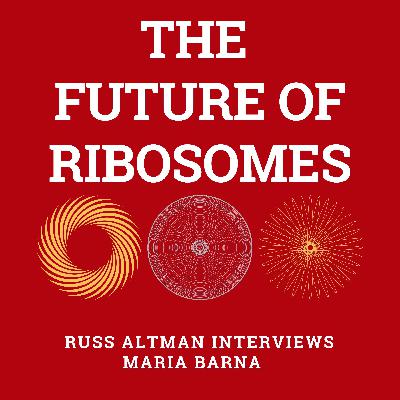
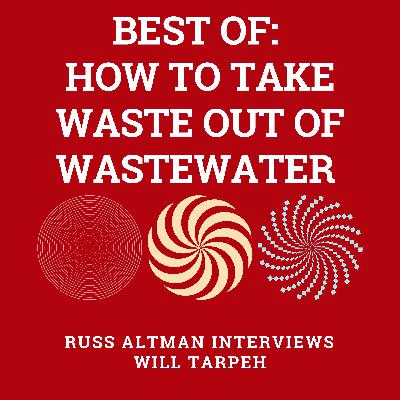
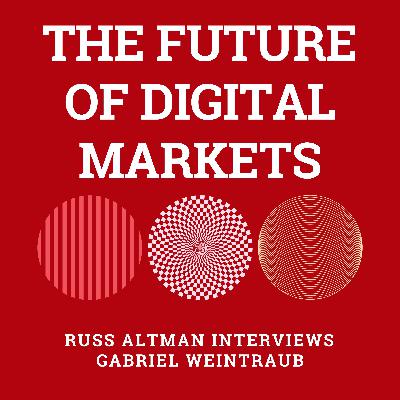


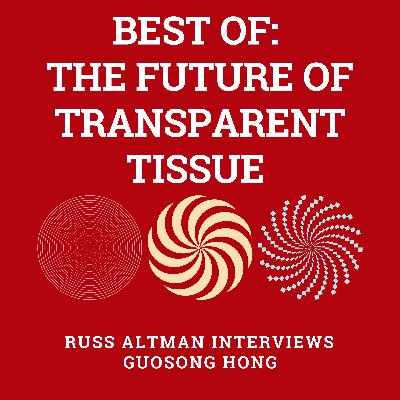



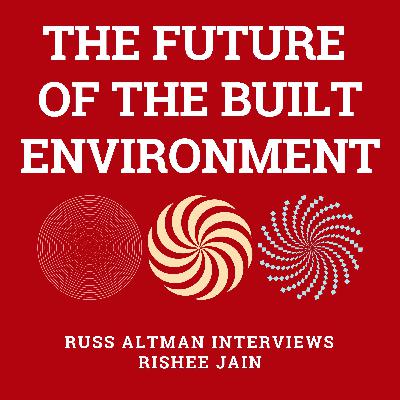
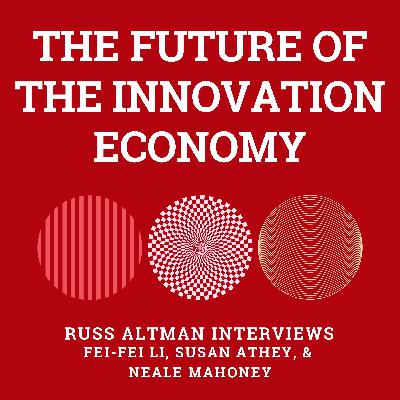


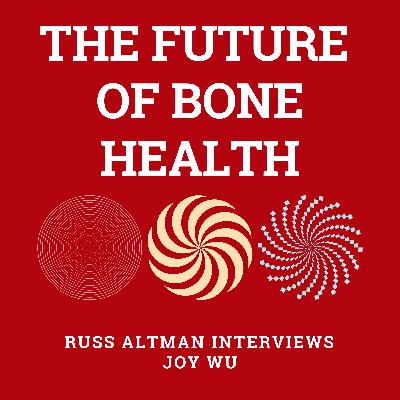
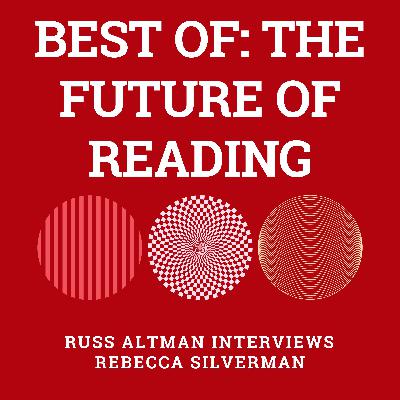
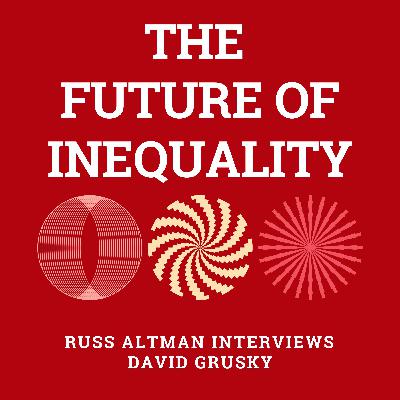
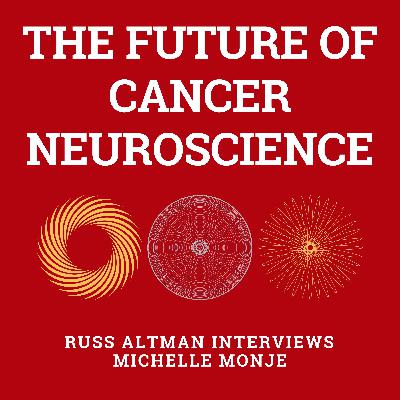




Too much water in the conversation
awesome Thanks for your worthwhile conversation.